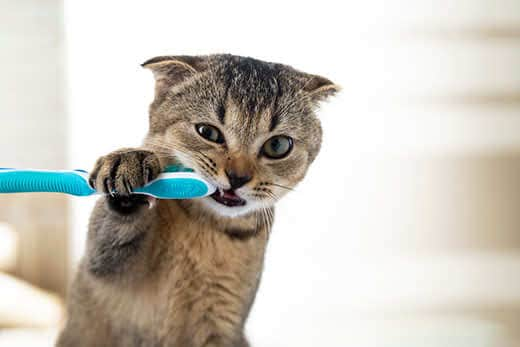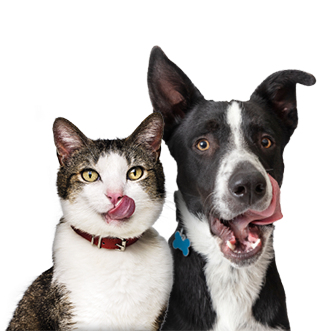
-
Find the right food for your pet
Take this quiz to see which food may be the best for your furry friend.
Find the right food for your pet
Take this quiz to see which food may be the best for your furry friend.
Featured products
 Adult Healthy Cuisine Roasted Chicken, Carrots & Spinach Stew Dog Food
Adult Healthy Cuisine Roasted Chicken, Carrots & Spinach Stew Dog FoodDelicious roasted chicken paired with tender vegetables in a succulent stew
Shop Now Small & Mini Savory Stew with Chicken & Vegetables Dog Food
Small & Mini Savory Stew with Chicken & Vegetables Dog FoodA delicious complement to the nutrition of Science Diet Small & Mini 7+ dog food
Shop Now Adult 7+ Perfect Digestion Chicken, Whole Oats & Brown Rice Recipe Dog Food
Adult 7+ Perfect Digestion Chicken, Whole Oats & Brown Rice Recipe Dog FoodScience Diet's breakthrough nutrition supports ultimate digestive well-being & healthy microbiome for dogs age 7+
Shop NowFeatured products
 Adult 7+ Tender Tuna Dinner Cat Food
Adult 7+ Tender Tuna Dinner Cat FoodWith delicious chunks in a decadent gravy
Shop Now Adult 7+ Senior Vitality Chicken & Vegetable Stew Cat Food
Adult 7+ Senior Vitality Chicken & Vegetable Stew Cat FoodImproves Everyday Ability to Get Up & Go
Shop Now Adult Savory Entrée Can Variety Pack Cat Food
Adult Savory Entrée Can Variety Pack Cat FoodPrecisely balanced nutrition with the delicious taste of savory minced chicken to help fuel the energy needs of cats during the prime of their life
Shop Now -
Dog
- Dog Tips & Articles
-
Health Category
- Weight
- Food & Environmental Sensitivities
- Urinary
- Digestive
- Joint
- Kidney
-
Life Stage
- Puppy Nutrition
- Adult Nutrition
- Senior Nutrition
Cat
- Cat Tips & Articles
-
Health Category
- Weight
- Skin & Food Sensitivities
- Urinary
- Digestive
- Kidney
-
Life Stage
- Kitten Nutrition
- Adult Nutrition
Featured articles
 Why Are Dogs and Cats So Cute?
Why Are Dogs and Cats So Cute?If waggy puppy dog tails and furry kitten yawns make you swoon, you're not alone. Why are cats so cute? And, dogs too! Let's find out!
Read More Do Dogs and Cats have Belly Buttons?
Do Dogs and Cats have Belly Buttons?Learn whether cats & dogs have belly buttons like humans, what the function is, and if there are any health concerns associated with it.
Read More Does My Pet Hate Me?
Does My Pet Hate Me?Learn tips for bonding with your pet if you've ever thought, 'My dog doesn't like me, or 'Why do I have a standoffish cat?'
Read More -


You love your pet, and you want to do everything in your power to keep them healthy. You may already know that dental health is an important aspect of your dog or cat's overall well-being, but did you know that periodontal, or gum, disease is the most common clinical condition in pets over age 3?
Perhaps your veterinarian has started to recommend that you brush your pet's teeth at home. Now, you've found yourself wondering which cat toothpaste or dog toothpaste to use and how exactly to start an oral hygiene routine for your furry friend. Here's what you need to know to keep your pet's pearly whites healthy.
Should You Brush Your Pet's Teeth?
Before you jump in, check with your vet. If your dog has advanced dental disease or if your cat has tooth enamel defects (called resorptive lesions), brushing their teeth will be painful and won't solve the problem.
Brushing your pet's teeth is most effective when you start with a clean slate. If you can, start while they're young before periodontal disease begins to set in. Brushing can also work well right after your pet gets a professional dental cleaning at their vet's office. From there, cleaning your dog or cat's teeth prevents plaque buildup. Brushing alone can't remove tartar (hardened plaque), so it's all about prevention.
Brushing your pet's teeth daily not only helps to prevent gum disease but can also reduce the need for professional dental cleanings under general anesthesia. Cleaner, healthier teeth often mean fewer tooth extractions or other oral surgeries down the road as well. This is much easier on your pet, and it saves you from expensive vet bills!

What is the Best Toothpaste for Your Dog or Cat?
Pet toothpaste is different from human toothpaste, so this is one thing you can't share with your furry friend. Luckily, many toothpastes out there are formulated with your pal in mind. These pet-friendly pastes come in a variety of tempting flavors, such as beef, chicken and fish. Some brands simply make "pet toothpaste," rather than designating it as "dog toothpaste" or "cat toothpaste."
Whatever you choose, it's best to use a commercial toothpaste and skip homemade pastes. Commercial pastes are specially designed to be safe for your pet to ingest, while DIY toothpaste leaves room for error.
Ingredients to Avoid
The main difference between human and pet dental products is that cat and dog toothpaste avoids ingredients that can be harmful to your pet if swallowed. Here are some ingredients that shouldn't be on your pet toothpaste label:
- Fluoride. This key ingredient in many human toothpastes can be toxic to pets if swallowed.
- Xylitol. An artificial sweetener, xylitol is sometimes used in human toothpaste formulas. This ingredient is highly toxic and doesn't belong in anything that goes into your pet's mouth.
- Baking soda. Baking soda has a bitter taste, and it's important to make toothbrushing a positive experience for your pet. Also, it can upset your dog or cat's tummy if ingested.
The best way to pick a toothpaste for your canine or feline companion is to ask your vet for recommendations. Another reliable source is the Veterinary Oral Health Council, which lists approved products that are safe and beneficial for pet dental hygiene. The council tests the products independently and is the gold standard for pet dental health.


Tasty Tips
Young pets may need several visits in their first year for vaccinations. Adult pets generally benefit from annual check-ups, while senior or special-needs pets might require more frequent visits.
Selecting a Pet Toothbrush
The next step is choosing a toothbrush. This decision comes down to personal preference for you and your pet, but when shopping for a toothbrush, always get soft or extra-soft bristles — nothing firm. Also, pay attention to size. Pet-specific toothbrushes for tiny to large mouths are available.
Some pet parents find that a baby or toddler (yes, human) toothbrush works well. Another popular option is the finger brush, a small rubberized "brush" that slips over your finger. Many people love these and find them easier to maneuver along the gums and teeth, while others prefer not to have their finger in their cat or dog's mouth.
A third option is a simple gauze square with toothpaste on it. Like a rubber finger brush, this involves putting your finger in your pet's mouth. But if your furry friend won't tolerate a toothbrush or finger brush, it can do the trick.
Quick Tips for Brushing Your Pet's Teeth
So, you've selected your cat toothpaste, dog toothpaste or generic pet toothpaste, and you're ready to jump in and clean those chompers. Not so fast! Ease your pet into toothbrushing slowly. The ultimate goal is to brush your dog or cat's teeth every day, but you'll need to get them used to the feeling.
First — and this may come as a surprise — you don't need to open your pet's mouth to brush their teeth. Ever. Cats and dogs don't like this, and it isn't beneficial. With that said, here are the basic steps:
- Choose a time you know you can stick to on a regular basis. Pets love routine. Try pairing toothbrushing with another part of your daily routine to help you remember, such as when you take your vitamins before bed.
- To begin, let them lick the toothpaste off the brush. Some pets prefer one flavor of dog toothpaste or cat toothpaste over the other, and it might take some trial and error. Once they've given you the seal of approval, start brushing gradually. In general, use a pea-sized amount of toothpaste per side. Bigger dogs may need more, while cats and small dogs will need less.
- Slip the toothbrush or finger brush under their cheek and brush, brush, brush. Then go to the other side (you may add more toothpaste here) and brush. Finally, hit the front teeth. The whole process takes about 30 seconds. If your pet likes brushing, you can work up to a minute over time.
Keeping your dog's teeth healthy and your cat's chompers in good shape is an important part of being a pet parent. And while it might sound like a hassle, brushing your pet's teeth every day can easily become part of your daily routine. Sometimes, topping off brushing with a special treat or quick play session can add to the fun. In the end, your dedication will pay off with more one-on-one time and a healthier pet.


Dr. Karen Louis owns her low stress veterinary clinic near St. Louis. When she's not helping dogs and cats live their best lives, she maintains her blog, VetChick.com, and is an award winning nature photographer.
Related products

With delicious chunks in a decadent gravy

Supports energy level and beautiful fur in mature cats

Precisely balanced nutrition with the delicious taste of savory minced chicken to help fuel the energy needs of cats during the prime of their life

Improves Everyday Ability to Get Up & Go
Related articles

Learn tips for bonding with your pet if you've ever thought, 'My dog doesn't like me, or 'Why do I have a standoffish cat?'

If waggy puppy dog tails and furry kitten yawns make you swoon, you're not alone. Why are cats so cute? And, dogs too! Let's find out!

Learn whether cats & dogs have belly buttons like humans, what the function is, and if there are any health concerns associated with it.

Discover how your pets might be impacted by the loss of another. Learn how to recognize their signs of grieving & how to help them cope with their loss.

Put your pet on a diet without them knowing
Our low calorie formula helps you control your pet's weight. It's packed with high-quality protein for building lean muscles, and made with purposeful ingredients for a flavorful, nutritious meal. Clinically proven antioxidants, Vitamin C+E, help promote a healthy immune system.
Put your pet on a diet without them knowing
Our low calorie formula helps you control your pet's weight. It's packed with high-quality protein for building lean muscles, and made with purposeful ingredients for a flavorful, nutritious meal. Clinically proven antioxidants, Vitamin C+E, help promote a healthy immune system.

